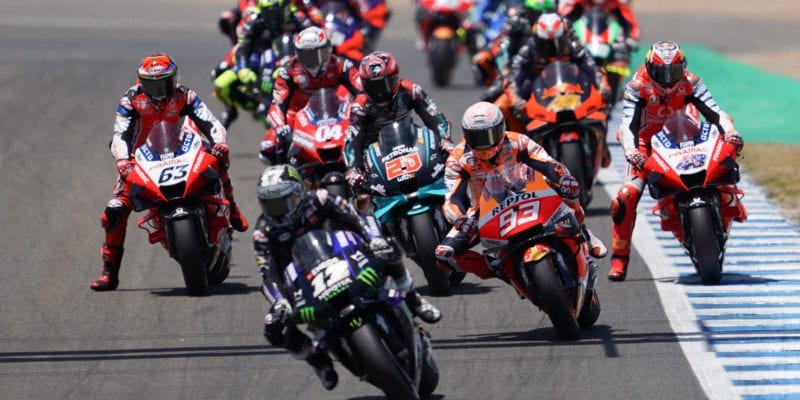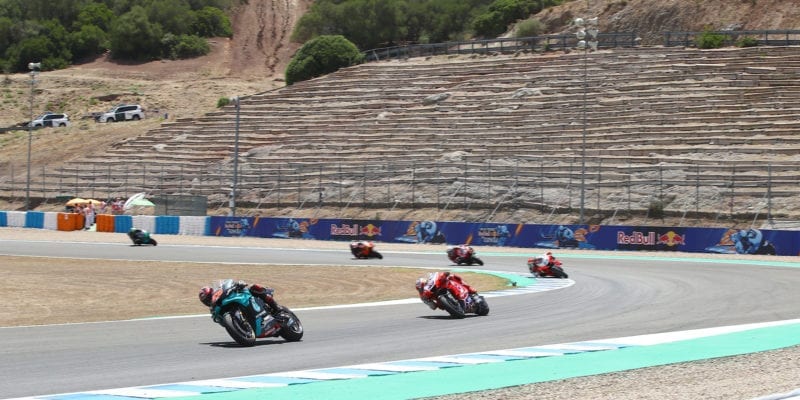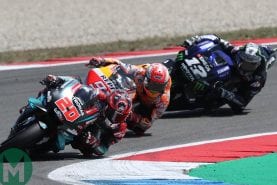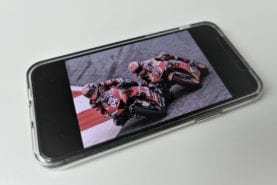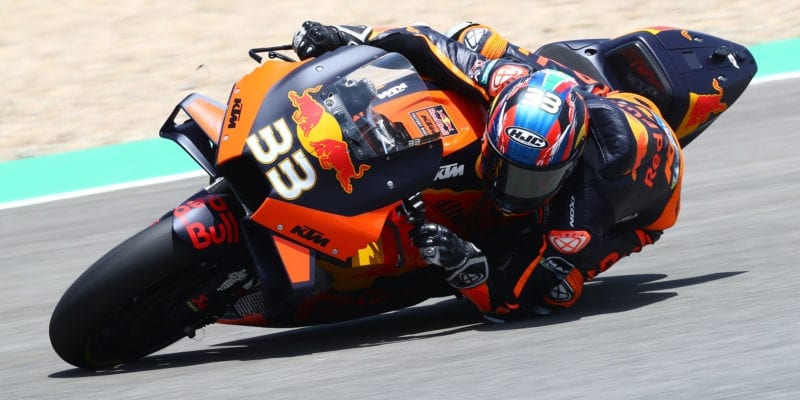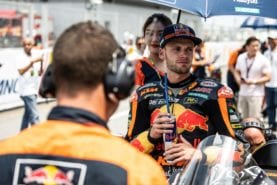“As soon as the Yamaha has a Ducati in front of us we lose our potential,” he said on Thursday. “They are faster on the straights, so we can’t use our corner speed.”
He could’ve been forgiven for panicking, but he didn’t. It took him two laps to repass both Ducatis, then he settled into a smooth, unruffled pace and went after Viñales, who was already in trouble with his soft front tyre.
The soft front seemed like a mad choice, when every other rider on the grid except team-mate Valentino Rossi, had chosen the hard. Viñales confirmed afterwards that the softer tyre – which nearly had him on the ground several times once it got hot and bothered – had cost him the chance of winning the race.
In fact it was a great choice, because it gave him the confidence to push hard from lights outs. If he had gone with the hard, Márquez would have disappeared into the distance in the early laps and wouldn’t have needed to take the risks that had him off the track on lap five.
With both Márquez and Viñales out of the fight Quartararo had an easy run to what will almost certainly be the first of many MotoGP victories. Remember he might have won four races last year if Márquez hadn’t been around, because he came very close to beating the Spaniard at Misano, Buriram, Motegi and Valencia.
No doubt Quartararo – whose career was falling apart until he won the 2018 Catalan Moto2 race – is now in the race for the 2020 world championship. Even during his rookie season, riding a lower-spec YZR-M1, he was stronger than Viñales, because he has a cooler head and a better ability to adapt to changing grip conditions, a vital talent during the Michelin era. Perhaps Viñales has improved since then, but so too has Quartararo.
Does Yamaha’s first one-two since Le Mans 2017 mean the factory has finally dragged itself out of the doldrums where it’s been stuck ever since the advent of the triple M era – Michelin and Magneti Marelli – in 2016? Maybe, maybe not. Because just as Quartararo would’ve finished second at Jerez last year if his gear shifter hadn’t broken, so too would he have finished second this year if Márquez hadn’t got carried away in the first few laps.
Jerez flatters the Yamaha. Its superior corner speed – through Jerez’s faster turns: Four, Five, Seven, Eight, 11 and 12 – makes it the perfect bike for the track. Quartararo and Viñales will have a great chance of another win at Jerez on Sunday, but after that things may get more complicated
There is little doubt that Quartararo is the most talented French Grand Prix racer in more than seven decades of world championship racing. It’s curious that it’s taken the French this long, because France was the first nation of bike racing. French riders, teams and machines dominated the first major competitions – the Coupe Internationale of 1904 and 1905 – and much petrolhead vocabulary – carburettor, for example – comes from the French.
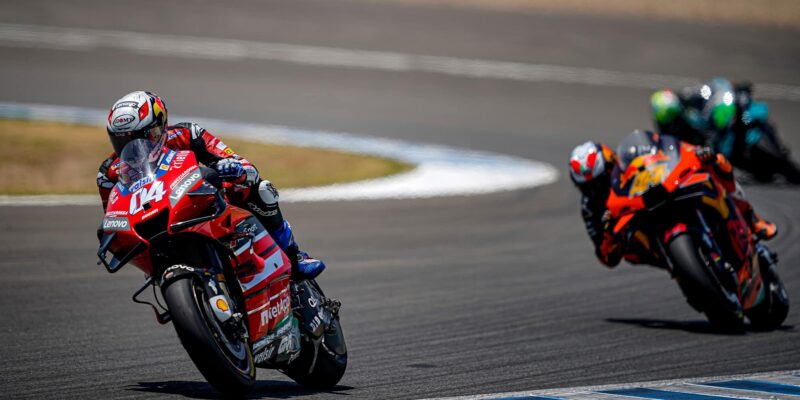
Dovizioso won the battle with Espargaró and Morbidelli for the final podium place
Ducati
It’s a sign – Ducati’s best Jerez performance since 2006
It could be argued that Ducati’s Jerez race was better than Yamaha’s. If the Andalusian circuit is just right for the M1 it is very wrong for the Desmosedici, because while the inline-four M1 loves long, sweeping corners the V4 Ducati hates them. So much so that Andrea Dovizioso’s and Jack Miller’s third- and four-place finishes were Ducati’s best Jerez result since Loris Capirossi won there in March 2006.
This suggests that Ducati has made a bigger step forward into 2020 than Yamaha. And if that’s the case the Bologna factory has its best chance of winning the MotoGP title since Casey Stoner hightailed it to Honda at the end of 2010.
Dovizioso – still hurting from a recently plated collarbone and still engaged in trench contract warfare with Ducati – played down the Desmosedici’s performance throughout the weekend.
“I’m still not that good in the middle of the corner,” he said on Saturday. “I’m riding in a different way to last year and I still don’t have the confidence to do what I need to do.”
That caused the Italian – runner-up to Márquez in 2017, 2018 and 2019 – problems in the race. “I was exhausted because I couldn’t ride the bike the way I want and I’m still not comfortable on the bike.”
